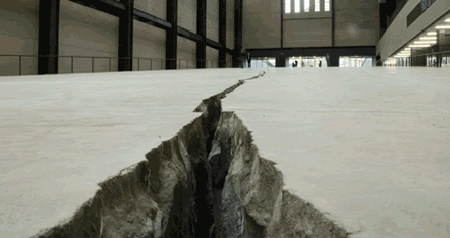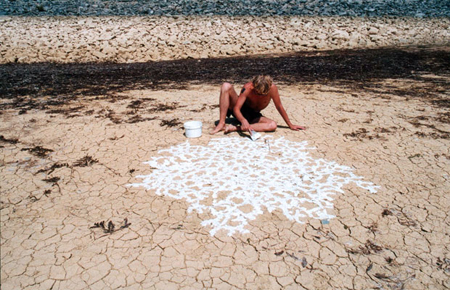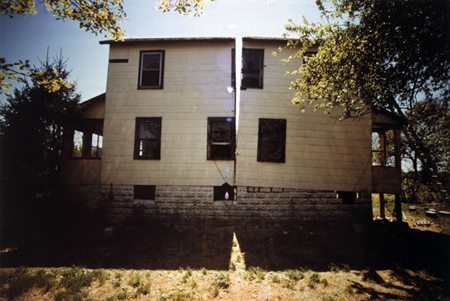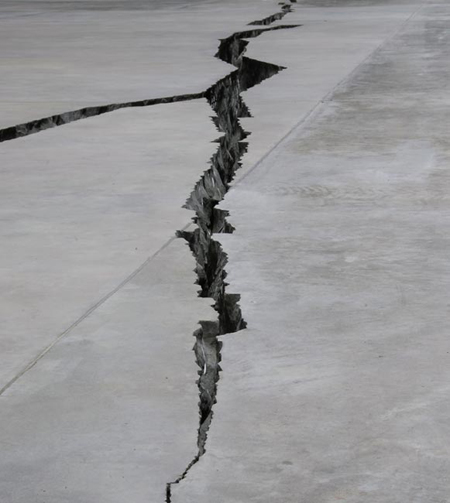The Invisible Line
Gordon Matta-Clark
Splitting, 1974
Gordon Matta-Clark (1943 – 1978) was an American artist best known for his site-specific artworks he made in the 1970s. He is famous for his “building cuts,” a series of works in abandoned buildings in which he variously removed sections of floors, ceilings, and walls. Over a period of about three months in 1974, he made two parallel vertical cuts straight through the middle of a nondescript two-story suburban house in Englewood, New Jersey, removing the material left between the cuts as well as some of the foundation blocks on which the house stood so that one half slightly tilted away from the other, creating a wedge-shaped aperture between them.
Doris Salcedo
Shibboleth, 2007

As the very first representative of a non-European tradition to be commissioned by the Tate Modern Unilever Series, Doris Salcedo has chosen an understated technique: that of inscribing into the ground of the Turbine Hall. The scar that begins like a thin, almost invisible line, at the main entrance gradually becomes a chasm in the earth at the far end of the former power station. This earthquake-like insertion evokes the brokenness and separateness of the post-colonial cultures of a non-white, non-European legacy. The installation is a metonymy for the term absence – an absence that negates the space of post-colonial peoples. The construction of a ‘negative space’, or emptied out space, corresponds to the trajectory of the history of post-colonialism. It is in Shibboleth (2007), where space is occupied silently and discreetly, not via a sense of domination or empowerment, that this trajectory can be traced.
An ‘imaginative landscape’ is at work in the heart of what Salcedo states is a monument to a European and modernist tradition of Western art; the Tate Modern. Shibboleth disrupts the Western view of landscape that creates a sense of things being in place and emphasises ‘a visual scape in which the observer stands back and distances himself or herself from the thing observed.’ In reversing the role of the viewer as not only witness but accomplice in an act of silence, Shibboleth proposes a different take on the role of Western art practice and traditions of art: here the earth opens up under the viewers’ feet, evoking an earthquake, an eruption of space, time and place. The view is negated by its downward spiralling motion, bringing to mind a story in Borges’ Labyrinths; negativity has become one with the ground, forcing a glance into an abyss that is disquieting in its silence.
– Abstract from a text by Stella Baraklianou, 2008
Maarten Vanden Eynde
Restauration du Lac de Montbel, 2003


